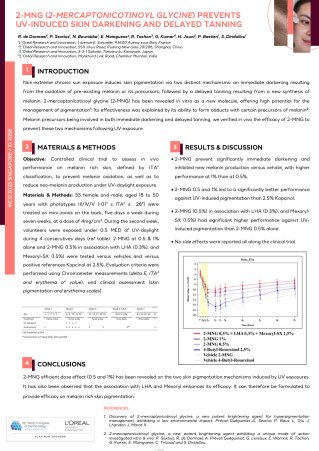
INTRODUCTION
Non-extreme chronic sun exposure induces skin pigmentation via two distinct mechanisms: an immediate darkening resulting
from the oxidation of pre-existing melanin or its precursors; followed by a delayed tanning resulting from a new synthesis of
melanin. 2-mercaptonicotinoyl glycine (2-MNG) has been revealed in vitro as a new molecule, offering high potential for the
management of pigmentation
1. Its effectiveness was explained by its ability to form adducts with certain precursors of melanin
2.
Melanin precursors being involved in both immediate darkening and delayed tanning, we verified in vivo the efficacy of 2-MNG to
prevent these two mechanisms following UV exposure.









